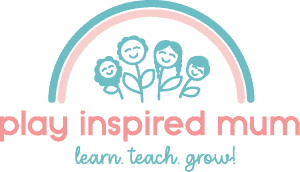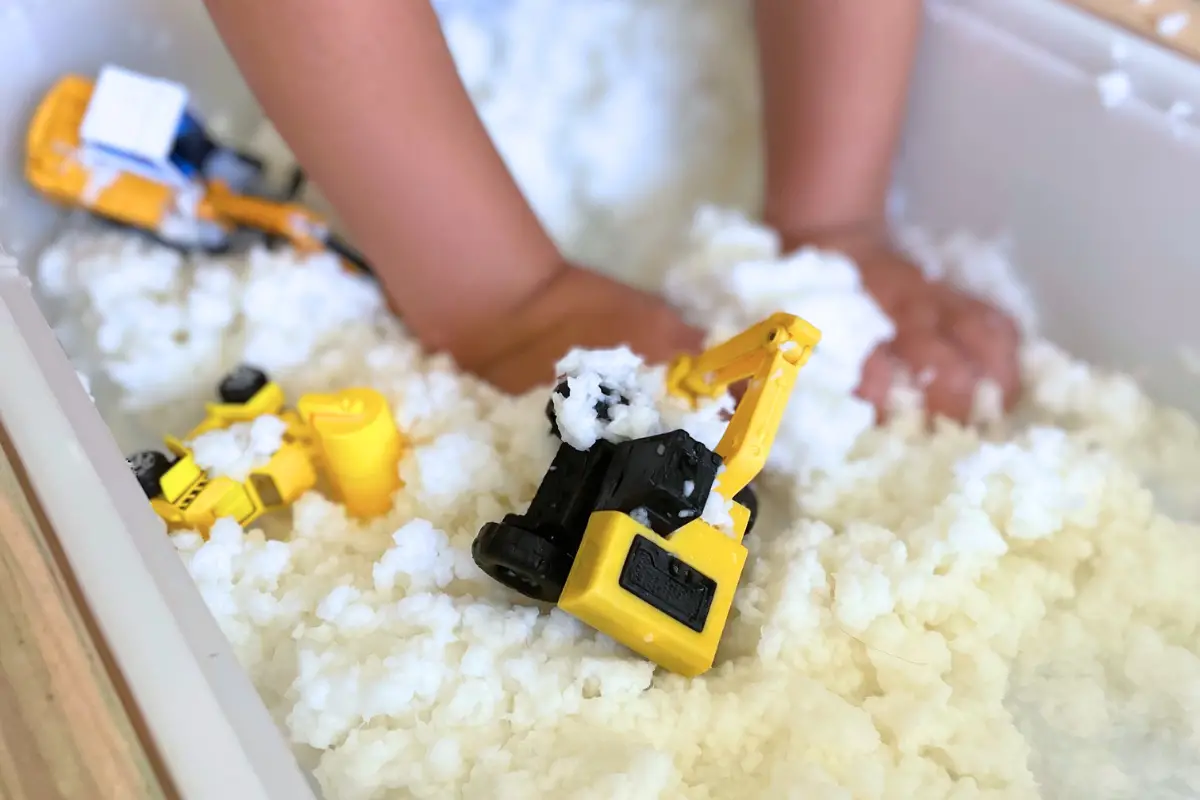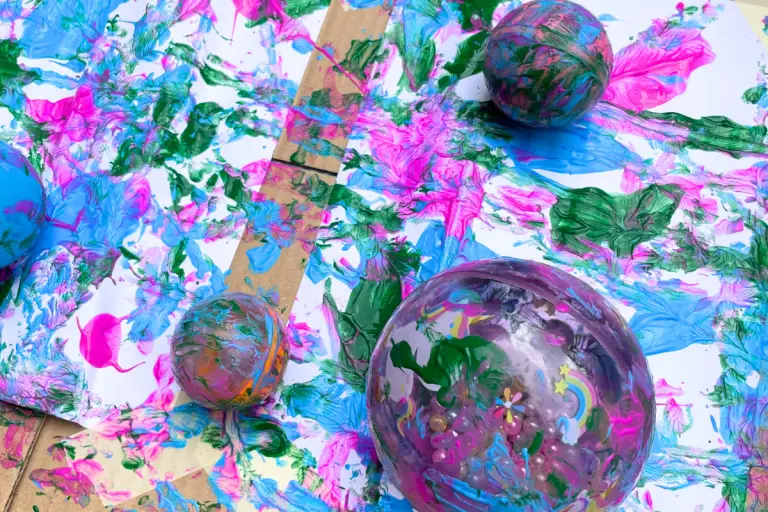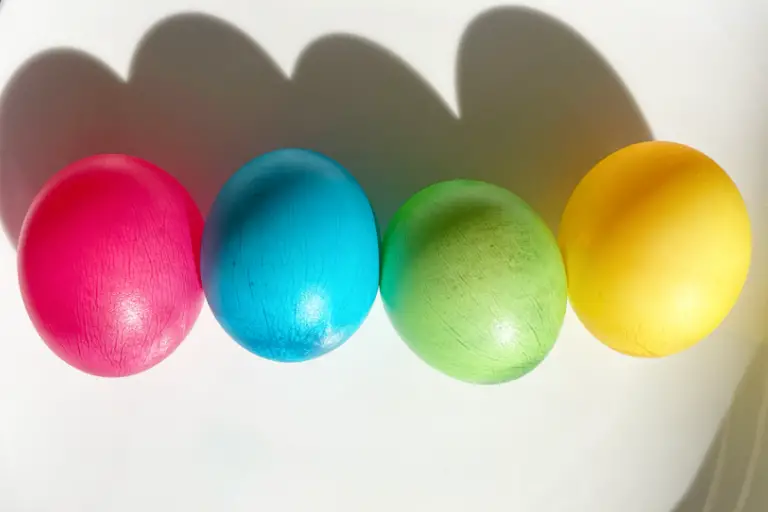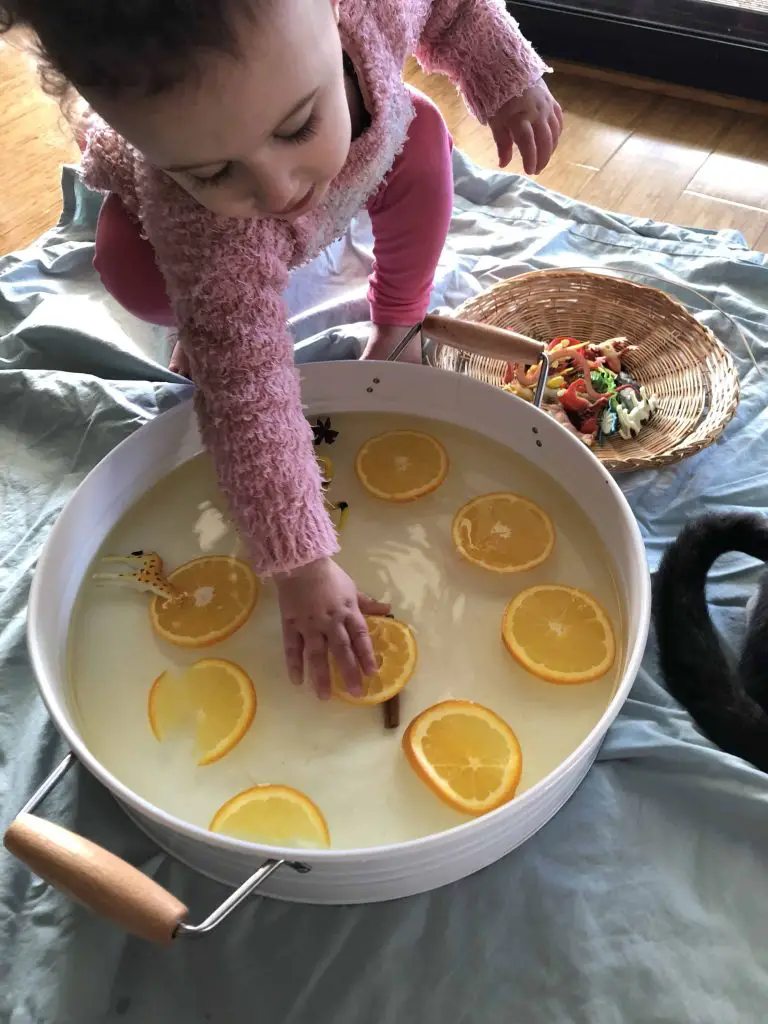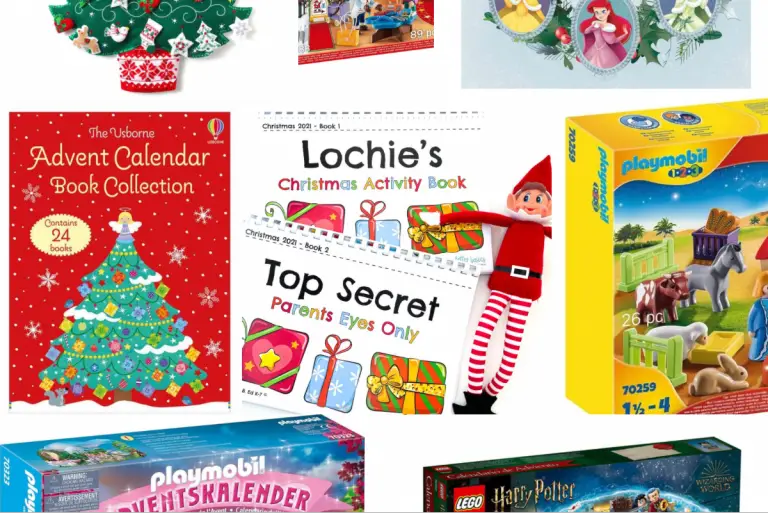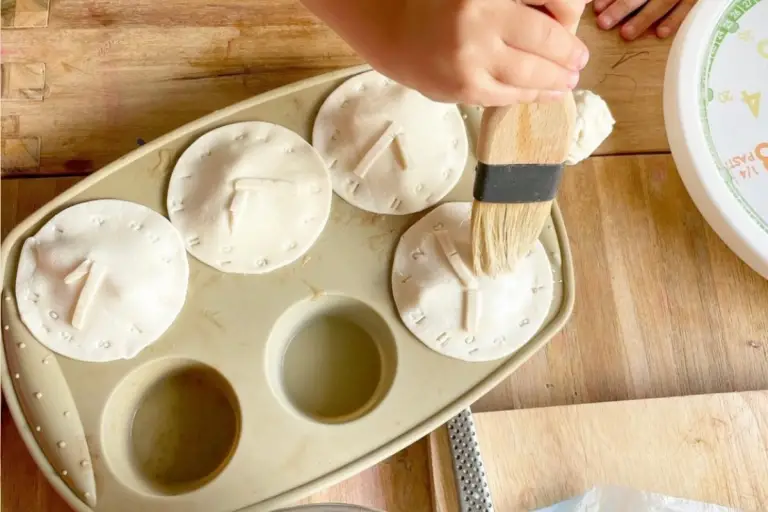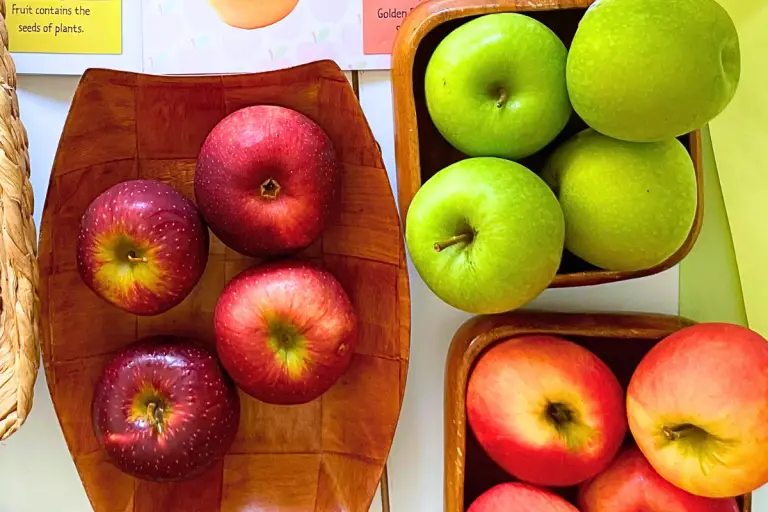Sensory Play Bin with Paper Pulp Clean Mud for Kids
Disclosure: This blog contains affiliate links which I may earn a small commission from if you purchase through them, at no extra cost to you.
Paper pulp clean mud is a simple and fun sensory bin filler for your toddlers next messy play session. Whether your using saved scrap paper or collecting shredded paper from a business in your community, this is a fun way of further extending the use of a resource that would otherwise be disposed of.
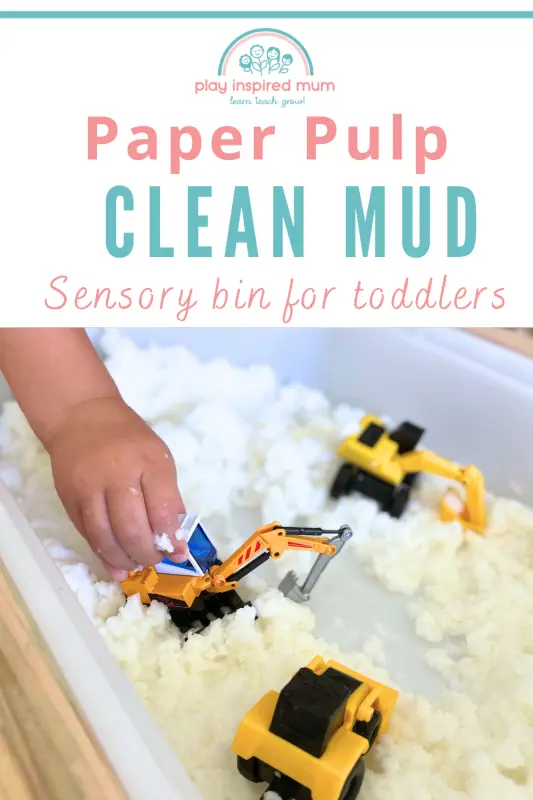
Introduction to Paper Pulp Clean Mud Sensory Bins
I have always found sensory bins to be an exceptional tool for the development of young children.
The act of engaging their little hands in activities that stimulate their senses opens a world of learning opportunities.
Specifically, paper pulp, when used as a base in sensory bins, serves as a fantastic material.
It is not only easy to create but also safe for young kids, making it ideal for sensory play activities.
It feels amazing, and the biggest feature for my kiddies is the sound it makes as their hands squish, squeeze and explore.
The educational benefits of involving children in sensory play cannot be overstated.
Activities such as these enhance cognitive development, foster fine and gross motor skills, and support language development in an imaginative and engaging way.
It offers children a great opportunity to explore different materials and textures, such as soft, shredded paper or the contrasting feel of smooth, small toys.
Through this exploration, they learn valuable skills in a hands-on environment that traditional methods of education might not provide.
The Importance of Sensory Play
I’ve discovered that sensory play, especially when it involves something as delightfully messy as paper pulp, is a fantastic way for young children to foster cognitive development, hone language skills, and fine-tune both their fine and gross motor skills.
In my experience, integrating this type of play activity offers a great opportunity for kids to explore and understand the world in a vibrant, hands-on manner.
Typically, a sensory bin filled with paper pulp clean mud can become an exciting arena for exploration and discovery.
During these interactive sessions, I’ve seen how the manipulation of paper pulp helps little hands to develop dexterity and strength, which are key components of fine motor skill development.
Playing with materials like this and play dough, taste safe mud, oobleck and all those other fabulous squishy play mediums is giving our kids an opportunity to develop and strengthen these skills which is going to give them the best foundation to be able to pick up and use a pair of scissors, write with a pencil and tie their own shoe.
They are learning how their bodys impact their environment; cause and effect.
Through pushing and squeezing the pulp they are learning how to challenge different pressures on their environment; proprioception.
Additionally, the act of scooping, pouring, and grasping the pulp and other small items enhances gross motor skills.
Language development is stimulated as we talk about the sensory experience, introducing new vocabulary related to textures, colors, and actions.
As young minds engage in this kind of sensory activity, the cognitive leaps I’ve witnessed have been nothing short of remarkable.
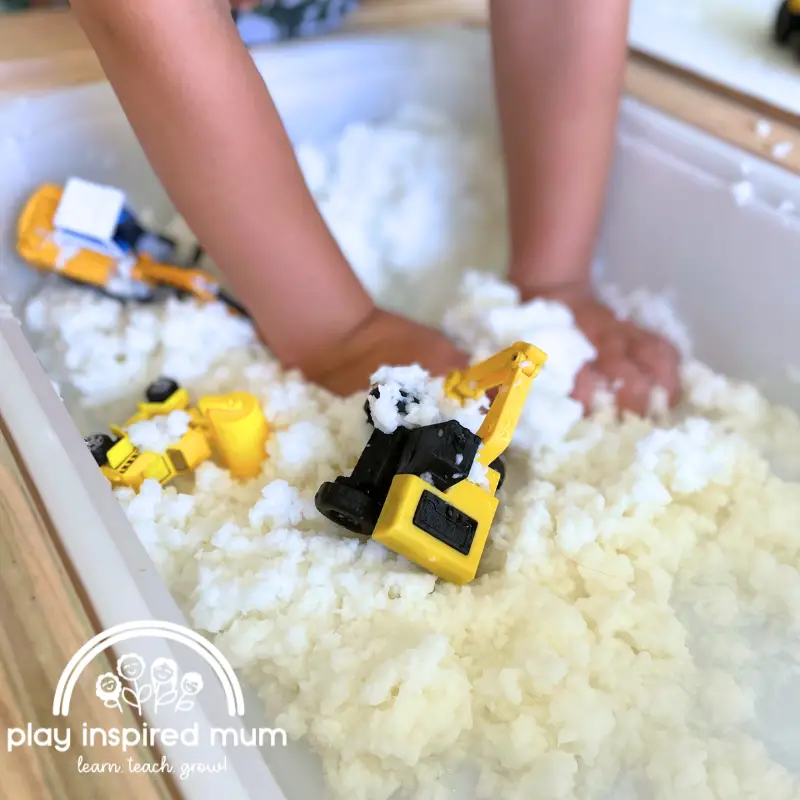
Benefits of Sensory Activities
Sensory activities offer remarkable benefits across various developmental areas, with brain development standing out as a prominent advantage.
Whether you are making sensory bottles, sand activities, splashing about in edible toddler finger paint or using a sensory table in different ways, sensory play ignites learning like nothing other.
Sensory play is one of the best ways to introduce new concepts, experiment, explore and learn.
The engagement of young children in sensory experiences, such as manipulating paper pulp or mixing different colours, stimulates brain growth and enhances cognitive abilities.
This type of play lays the foundation for language development and fine motor skills, both of which are critical as little hands explore new textures and shapes.
Gross motor skills receive a boost too, with activities like reaching for small pieces or navigating sensory bins.
Additionally, the sensory experience itself is vastly enriched.
Bright colours and varying textures captivate young minds, providing a great way for sensory systems to evolve.
Children’s senses are sharpened, offering them a sensory playground that no other type of play provides.
Lastly, problem-solving skills are nurtured.
Deciding how to build a structure with wet paper or figuring out which small objects will float enriches young kids with the ability to think critically and solve puzzles, setting them on a path to becoming keen problem-solvers.
Materials needed to make a paper pulp clean mud sensory bin
For crafting our sensory play activity, we will need a handful of materials.
These ensure a tactile experience that fosters growth in fine motor skills and cognitive development among young children.
I’ve rounded up everything needed, so there’s no need to scramble last minute.
- Toilet Paper: The base of our paper pulp, ensuring a soft, moldable medium.
- Warm Water: This will help break down the toilet paper into the desired consistency.
- Food Coloring (optional): A splash of different colors can transform the sensory experience, making it visually stimulating.
- Small Toys or Objects: Integrating items of different textures and shapes enhances the sensory bin, offering a great opportunity for exploration.
With these materials, we set the stage for an enriching sensory activity.
You can also use paper towel or printing paper. Printing paper will need to be blended and soaked a little longer to achieve the same consistency.
This isn’t just great fun; it also paves the way for educational growth in a variety of developmental aspects.
After my 3 year old and his friend ran through the house with a roll of toilet paper, I certainly wasn’t prepared to just dispose of the otherwise clean toilet paper.
Making a sensory bin with the already sacrificed toilet paper seemed like a great way to reuse the paper.
Variations to the plain mud can include mixing different ingredients into the water such as
- Cocoa powder
- Essential oils
- Entire rainbow of pastel paints
- Glitter or Mica
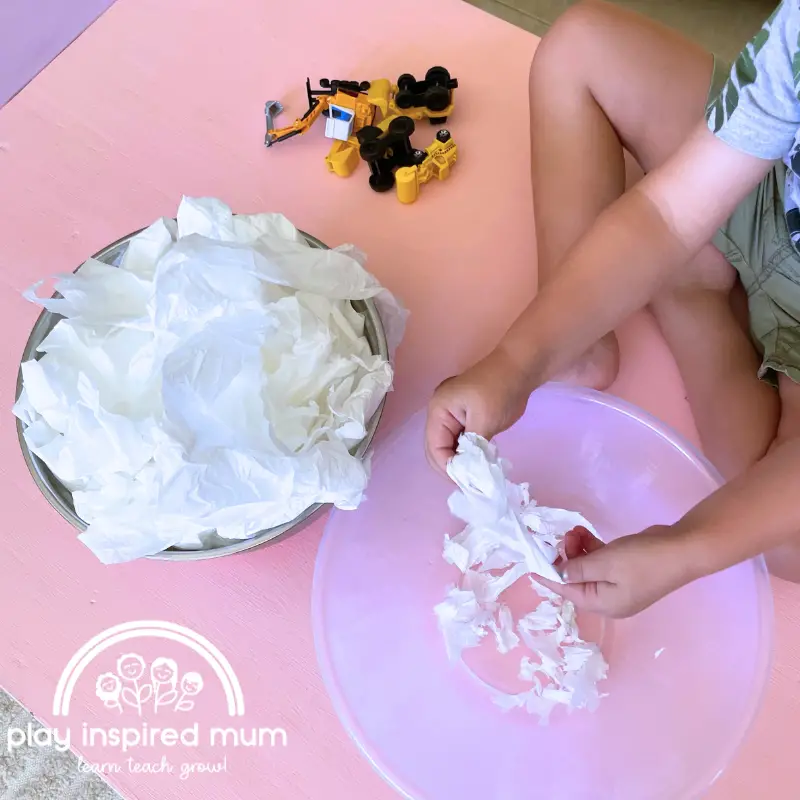
Step-by-Step Guide to Creating Paper Pulp Clean Mud
I found that creating paper pulp for our sensory bin was a task that mixed a bit of science with a whole lot of fun.
Initially, I started to tear the toilet paper into tiny pieces, discovering that smaller bits made the mixing process easier.
However, truth be told my mind just wasn’t in the game to be sitting still tearing paper so…. I dumped half the paper into the Thermomix with a spash of water and blitzed it on speed 8 until the mixture was smooth.
If the mix was sticking to the sides, I just added more warm water until it was a sploggy consistency.
I then added small batches of paper to the mix until it was all blended together.
It took about 30 seconds to turn 2L of toilet paper into pulp that was slick and smooth.
If you were making your paper pulp by hand, simply cover the torn paper with warm water and stir until the water is absorbed.
Addition of colour can come next. A few drops of food colouring can turn the pulp into a vibrant playground.
To achieve just the right hue, mixing thoroughly is key.
Squishing the pulp to remove excess water as needed, I observed, resulted in the perfect consistency for play.
It was a mesmerizing process, witnessing the paper turn from firm to supple, ready for hours of sensory exploration.
Adding Colour and Texture to Paper Pulp Clean Mud
I discovered a great way to elevate the sensory experience with paper pulp clean mud.
First, I dripped vibrant food colouring onto the dampened paper mixture.
This action transformed the bland pulp into an enthralling palette of different colours.
It offered not just a feast for the eyes but an opportunity for younger children to learn about colour mixing.
Next, I took small items, such as pom poms, natural gem stones, pipe cleaners, and small toys, embedding them into the mud.
For little hands, fishing out these buried treasures became an exciting fine motor skills challenge.
Each small object, with its unique texture, invited eager fingers to explore further, turning the sensory bin into a treasure trove of sensory delights.
Adding these elements did not just infuse the mix with bright colours and various textures.
We have also used pH indicator made from red cabbage to add a little colour changing magic to our paper pulp with success that even the bigger kids loved.
It also encouraged open-ended play, inviting children to dive into their imagination and craft their own vibrant world within the bin.
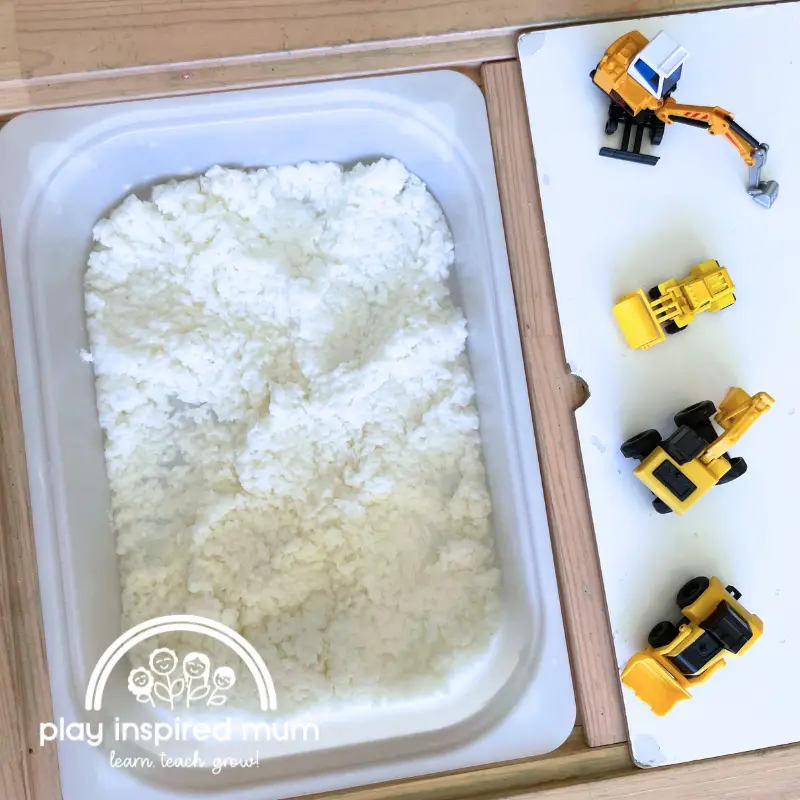
Sensory Bin Themes and Ideas
Creating a sensory bin with paper pulp clean mud offers endless possibilities.
By incorporating different materials and themes, you can capture young kids’ attention and foster a love for exploration.
I have found that incorporating small toys adds a sense of surprise and discovery.
Small toys buried within the pulp invite little hands to dig and discover.
The use of cookie cutters encourages creativity, allowing young children to shape the pulp into imaginative forms.
Add vibrant colours with food colouring, and suddenly, the bin transforms into an artist’s palette.
Incorporating items of different textures, like pom poms or pipe cleaners, enhances the sensory experience.
For older children, thematic bins, such as a dump truck scene filled with small items to load and transport, offer a great opportunity to engage in dramatic play.
Each addition to the bin becomes an opportunity for learning, exploration, and fun.
Incorporating Learning Goals
I discovered a great way to infuse learning into sensory play with paper pulp clean mud.
First, focusing on enhancing young children’s language development, I used simple strategies.
I incorporated small pieces from various categories – animals, vehicles, and objects – to prompt identification and naming.
This activity was a great opportunity for little ones to expand their vocabulary.
Identifying different colours became an exciting game as we mixed paper pulp batches with vibrant food colouring.
We made predications around what we thought the colours would turn out like and made reflections to other colour blending activities that we have done.
This not only made for a visually appealing sensory experience but also deepened their understanding of colours.
To enhance fine motor skills, I added small objects like pom poms and natural gem stones into the mix.
This encouraged young learners to dig, find, and match, harnessing their small muscle movements.
Using a cookie cutter in the sensory bin became an engaging way to practice precision and coordination, adding another layer to their skill set.
Mr three loved squeezing the paper pulp into the cutters and watching the excess water leach out.
Ensuring safety was paramount, so all materials used were non-toxic and age appropriate.
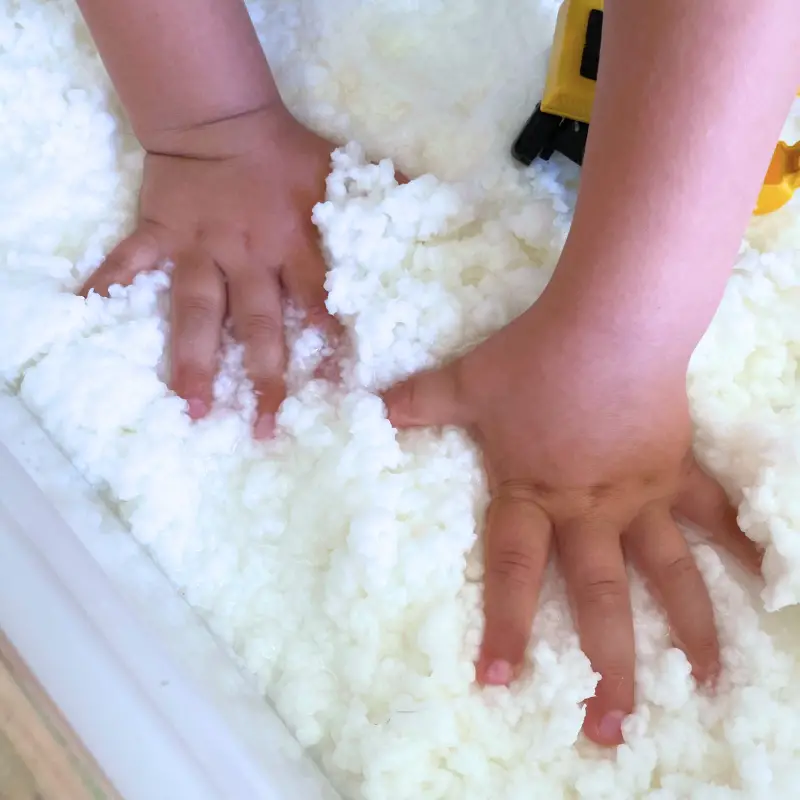
Safety Tips and Considerations
Safety is paramount when embarking on sensory play with young kids.
Ensuring materials like paper pulp, food colouring, and additional small toys are non-toxic becomes essential.
I always checking labels for any potential hazards before letting little hands dive into the sensory bin.
Supervision is also vital.
Watching over young children as they explore different textures and colours helps prevent any unwanted items from being put in mouths or noses.
I consider creating a safe play environment not just a precaution but a necessity.
By selecting safe materials and maintaining a watchful eye, we ensure that sensory play remains a great opportunity for fun and learning.
This approach will make the sensory bin a source of joy, not concern.
It allows me to be present delight in them, observe them, feed their curiosity and expand their comprehension with open ended questions when needed.
Clean-up and Storage
Cleaning up after a vibrant sensory play session with paper pulp can seem daunting.
I have found a simple system that works wonders.
First, clean it up right away – it’s easier to cleanup when wet.
The paper pulp dries hard after being wet.
Scoop the paper pulp into a strainer.
Let the excess water drain away. Gently press the pulp paper ball into the strainer to squeeze excess water out.
This method ensures a quicker drying process as much water is removed before setting it our to dry.
I then spread the pulp on a big roll of white paper under the sun. Sunlight works its magic, making the pulp ready for storage by the next day.
Store the dry paper pulp in plastic bowls with lids.
Small holes punctured in these lids allow the material to breathe, preventing mold.
For the sensory bin and small toys, warm water mixed with a bit of soap does the job.
I rinse them and leave them to air dry.
Bright colours remain vibrant, and the materials fresh for next time.
It’s a great opportunity to involve young children, teaching them responsibility and the easy way to maintain their play environment.
Regarding storage, clear containers are my go-to.
They make it much easier to find specific items when we’re planning our next sensory adventure.
Stacking these containers maximizes space in our play cupboard, ensuring a clutter-free area for other activities.
This clean-up routine transformed our sensory play experiences into hassle-free fun, allowing us to focus more on the joy and less on the mess.
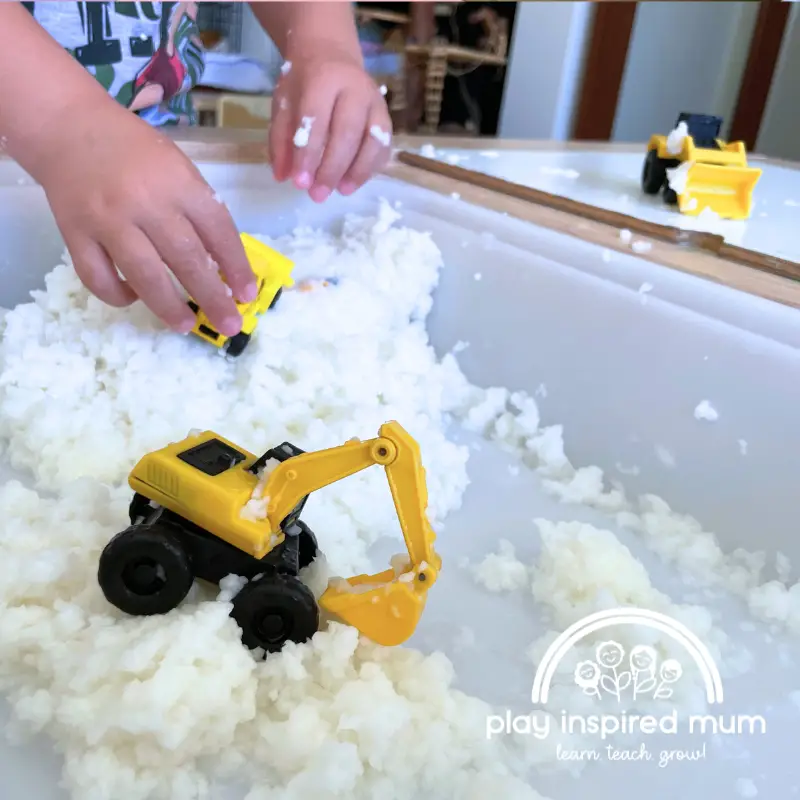
Adapting for Different Ages
Adapting the sensory play bin for diverse age groups ensures that both younger children and older kids find joy and learning in the activities.
For toddlers, I focus on simplicity and safety.
Incorporating large, easy-to-handle puzzle pieces and soft, colourful pom poms cater to their developing fine motor skills and pique their interest with bright colours.
These items, safe for little hands, offer a great opportunity for them to explore without the risk of swallowing small pieces.
As for older children, the complexity of the sensory experience can be heightened.
Small objects that challenge their problem-solving skills, such as different materials for colour mixing or tiny kinetic sand sculptures, bring a higher level of engagement.
By adding elements like small toys or cookie cutters into the mix, it becomes much more than a sensory activity; it transforms into a fantastic arena for dramatic play and cognitive development.
Turning the sensory bin into a great activity that supports a young child’s senses, it also becomes an easy way for them to foster a deeper understanding of the world around them, spanning across different learning styles and ages.
Encouraging Parental Involvement
I discovered that involving parents in sensory play not only strengthens bonds but greatly enhances the learning experience for kids.
As we set up a sensory play bin with paper pulp clean mud, the act of parents playing alongside their children transforms the activity into a powerful educational tool.
Participating together offers a fantastic opportunity for younger children and even older kids to learn through exploration, aided by the guiding hands of their parents.
One easy way for parental involvement is through the creation of the paper pulp itself.
It is as simple as tearing up sheets of paper, a task even small hands can manage with a little help.
Together, families can watch as warm water transforms the paper into mush, an essential lesson in cause and effect.
Additions like food colouring or small objects like pom poms, cookie cutters and animal figurines make the sensory experience even more enriching.
Parents can guide their children in recognizing different colours, feeling various textures, and even incorporating educational themes like numbers or letters into the mix.
For parents, this is a great activity to foster fine and gross motor skills in their children.
Guiding little hands as they grab, pour, and explore the pulp encourages the development of these essential skills.
It’s a beautiful sight, watching the joy and curiosity on their faces as they engage in this sensory play.
What to do once play is finished
After a lively session of sensory play, you might wonder what becomes of the paper pulp clean mud that filled your bin.
The beauty of employing this material in activities with young children lies not only in the fun but also in the possibilities it presents for reuse, contributing to sustainability.
I have found several great ways to recycle paper pulp, making the entire experience even more rewarding.
For starters, consider forming it into small items like seed balls or crafts.
By adding a little bit of water, you can mold the paper pulp around seeds to create biodegradable plant starters that are easy for little hands to manage.
Not only does this offer a great opportunity to talk about plant life and growth, but it also encourages further exploration of the sensory experience outdoors.
Alternatively, the pulp can be reshaped and dried to make small world play pieces or small toys, offering an easy way for children to engage in a different type of play.
Another option is crafting with the pulp.
Mixing it with enough water, you can form it into shapes or layers to create objects of different textures and colors.
Once dried, these creations can become the base for painting, adding another layer to the sensory experience.
This method thrives on open-ended play, inviting children to express their creativity in myriad ways.
Here are some more great ideas for sensory crafts that can be made with left over paper pulp.
DIY Seed paper is definitely on our list of crafts to try. We made out own paper to use for end of year teacher gifts one year. An added bonus would be to plant the card and have them grow.
Unleash the Joy of Messy Play
I had always believed engaging young children in sensory activities would be an easy way to foster cognitive development and enhance their sensory experience.
As I ventured into creating a sensory bin with paper pulp “clean mud” for kids, the joy I witnessed was unparalleled.
Mixing warm water with toilet paper, adding food colouring, and incorporating small toys wasn’t just an activity; it became an adventure into the epitome of toddler-dom.
Exploring textures, bright colours, and the sensory system with little hands digging through the paper mixture, young kids exhibit bursts of language development and fine motor skills enhancement.
It’s amazing how scattered pieces of toilet paper, soaked in enough water and dotted with bright colours, transform into a great opportunity for learning.
Pom poms, cookie cutters, and small objects buried within this paper pulp invite curious minds to solve puzzles, enhancing their problem-solving skills.
For children with sensory processing disorder or sensory avoiders, try to make a sensory bag where the pulp is inside the bag. Children can still safely explore while not risking getting any on their hands.
Thus, I invite you to embrace the messy play with open arms – let the bright colours and wet paper inspire you to introduce sensory play activities into the living room or classroom.
Trust me, it’s much fun and a great activity that turns into educational opportunities, making every moment a treasure trove for cognitive and language development.
